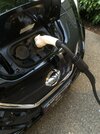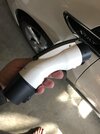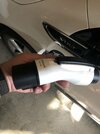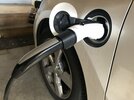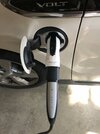If the goal is to charge a non-Tesla at home, another option is to switch to using a 50A outlet. If an additional 50A outlet isn't practical, an electrician could take the power for the HPWC and use it instead for a 50A outlet and add a 50A plug onto the end of the HPWC. And then use whatever the other EV vendor recommends for charging from a 50A outlet.
When we added solar panels and PowerWalls to our house, we had the electricians add an extra 50A outlet (in addition to our two hard-wired HPWCs) - and now use it to provide power to our RV (which unfortunately is a diesel - since there isn't an EV/RV - yet).
If we added a non-Tesla EV, we probably would use a 50A outlet and not share an HPWC between a Tesla and non-Tesla - and risk introducing charging problems by connecting non-Tesla hardware to the HPWC (which might void the 8 year warranty on our Tesla battery packs.
When we added solar panels and PowerWalls to our house, we had the electricians add an extra 50A outlet (in addition to our two hard-wired HPWCs) - and now use it to provide power to our RV (which unfortunately is a diesel - since there isn't an EV/RV - yet).
If we added a non-Tesla EV, we probably would use a 50A outlet and not share an HPWC between a Tesla and non-Tesla - and risk introducing charging problems by connecting non-Tesla hardware to the HPWC (which might void the 8 year warranty on our Tesla battery packs.



